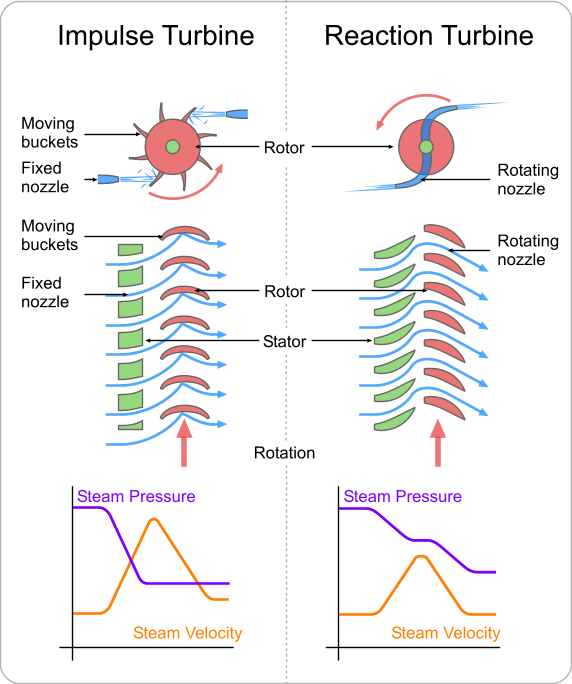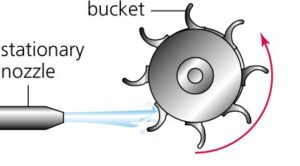RFID technology is not the only solution for indoor positioning applications. However, as part of a multi-technology system, it is a very effective solution.
RFID tags have a long history and can be traced back to the "friends" transponder system of military aircraft during World War II. Since then, RFID has been used in asset identification systems. Recently, it has been introduced to the market as a solution for real-time indoor positioning. This article provides a brief overview of how RFID works, how it can be applied to indoor asset tracking, and comparisons with other similar technologies.
How RFID works
The RFID system, known as radio frequency identification, consists of two parts: a transponder (or tag) containing data that can be read by RF; and an interrogator (or reader/writer) that can read the data of the transponder.
The specific way in which these two parts communicate (called the "coupling mechanism") determines the coverage, complexity, and cost of the system. (The "coupling" here refers to the transmission of information between the tag and the reader.) Currently, there are three coupling mechanisms on the market: inductive coupling, capacitive coupling, and backscatter coupling.
Inductive coupling
Inductive coupling has existed since the development of radio frequency identification (RFID) technology, and the system at the time included large tags with complex antenna mechanisms, mainly used to track large objects (such as cars, cattle). The inductively coupled tag extracts information from the magnetic field generated by the reader and modulates it. The reader measures the wave through the tag and decodes it into data. The magnetic fields used in these systems drop rapidly, allowing the effective identification range of inductive coupling to be approximately 1 cm to 1 m.
Capacitive coupling
When large inductive systems became the only choice on the market, capacitive coupling systems were developed with attributes that reduce the cost and size of RFID. Use conductive patches on readers and tags to create capacitance and signal data by changing the capacitance of the circuit. The range between these systems is very close (1 cm), and the orientation of the patch is important, so a typical application is an ID card that must be inserted into the reader. As the inductive circuit shrinks, the market for limited capacitive systems is shrinking.
In fact, most RFID systems today use some form of capacitive coupling. However, they are still affected by the strength of the distant magnetic field. In order to achieve long-distance communication, RFID systems must use higher frequency signals and rely on electrically powered electromagnetic signals. â€
Backscatter coupling
Backscatter coupling is a radar principle model. The reader emits UHF or microwave signals. These signals are reflected after hitting the target and carry back the target information, which is based on the spatial propagation law of the electromagnetic waves. The recognition distance is greater than lm. Of course, whether the scope of the identification is extended or not depends on the use case.
RFID tag type
The RFID market is classified according to the way the RFID tags are powered. Whether the tag has a car power supply available will affect its size, price, read range, and whether it can support additional sensors.
Passive tag
Passive tags do not have an internal power supply. They react by absorbing some of the information in the reader signal. This makes them cheap, durable and noise free (in the radio spectrum). They cannot be used to write and store sensor data due to the lack of consistent data. They have a lower data selection range and require high power, high cost readers.
Semi-passive label
Semi-passive tags (also known as "semi-active" and "battery-assisted" tags) have an onboard battery. Just like passive tags, they only transmit when there is a signal from the reader. The battery can either power the sensor or power the antenna. Semi-passive tags allow more signals to be reflected to the reader, which provides a read/write distance that is farther away than passive tags. They are larger, more expensive, and have limited battery life than passive tags.
Active tag
Active tags have a local power source (such as battery, optoelectronics) and can broadcast their own signals. Although they are defined as tags, they are technically independent of the signals that receive and modulate the reader. Instead, they are short-range radios. From an operational point of view, this distinction may not be as important, so we focus on the market and include them here. Compared to passive and semi-passive tags, active tags have a larger recognition range (up to 1 km), memory capacity, size and cost are also increased, and can work with weaker readers .
Track assets with RFID technology
Before evaluating the benefits of RFID as an asset tracking technology, it is necessary to clarify the meaning of “trackingâ€. RFID was used from the outset for asset tracking in the sense of a spreadsheet. It makes it easy to identify and record tracking items nearby. If your goal is to ensure that all trains passing through Gate A pass through Gate B, or to confirm if an employee has entered the building, then RFID is a fully tested and proven solution.
In these use cases, the RFID directly competes with the barcode or QR code. It has a distinct advantage to read and write at a distance. Active or semi-passive RFID tags can provide valuable sensor information. On the other hand, readers that match passive tags are not cheap, while semi-passive tags are expensive and have a limited lifetime.
A more challenging type of tracking is to learn the real-time location of tracking assets. Although this is a relatively new RFID use case, there are already many commercial solutions on the market.
These programs work differently. Some solutions use RFID exclusively for object recognition while using another technique for ranging. Almost all of them rely entirely on RFID to use active RFID tags. Although some studies use passive RFID tags, the cost of passive tag readers and the low recognition range of their systems make them not commercially available.
The performance of real-time location systems (RTLS) using active RFID tags is comparable to competing technologies such as Bluetooth, Bluetooth Low Energy (BLE), WiFi, Ultrasound and Ultra Wide Band (UWB). RFID is primarily based on the LANDMARC system, which determines the position by comparing the received signal strength (RSS) of the active tag with the RSS of the reference tag at the known location.
RFID has a larger recognition range than BLE. Compared to 70 meters of BLE, it can cover 1 kilometer outdoors. This may not be as important in an indoor environment where no obstacles are present (such as walls or floors), but in a warehouse or barn, the identification of active RFID tags allows companies to use fewer readers, thereby reducing costs and Reduce potential failures.
RFID also has some drawbacks as a tracking asset solution. Like all RF/ RSSI based solutions, it also has vulnerabilities. Since the RF signal can penetrate the wall, it is difficult to determine from which room the signal is sent. The high bandwidth used by active trackers (especially remote trackers) is very susceptible to interference. Moreover, tags and readers are very expensive compared to BLE.
RFID has been a huge success as part of the entire hybrid system. It provides reliable identification and can be used as a complementary technology to positioning information systems that rely on ultrasound, infrared or ultra-wideband. â€
Conclusion
At present, RFID technology cannot provide an independent solution for indoor positioning. In this regard, it is not the only option. However, as part of a multi-technology system, RFID brings decades of reliable identification history to indoor positioning. (Author: big meow)
An impulse turbine is a type of Steam Turbine where the rotor derives its rotational force from the impact force, or the direct push of steam on the blades.
The impulse turbine consists of a rotor mounted on a shaft that is free to rotate. Attached to the rotor are a set of curved blades. Nozzles then direct the high pressure and high temperature steam towards the blades of the turbines. The blades catch the impact force of the rapidly moving steam and rotate from this force.

The Impulse Principle
The steam at high pressure enters through a stationary nozzle of a steam turbine, as a result the pressure of the steam is decrease and an increase in steam velocity. As a result of increased steam velocity steam pass through the nozzle in the form of a high-speed jet. This high-velocity steam hit the properly shaped turbine blade, as a result, the steam flow direction is changed. The effect of this change in direction of the steam flow will produce an impulse force. This force cause the blade move, thereby the rotor will start to rotate.
The force applied to the blade is developed by causing the steam to change the direction of flow (Newton`s 2nd Law – change of momentum). The change of momentum produces the impulse force.
Impulse Turbine Working:

In the impulse turbine pressure drops and the velocity increases as the steam passes through the nozzles. When the steam passes through the moving blades the velocity drops but the pressure remains the same.
The fact that the pressure does not drop across the moving blades is the distinguishing feature of the impulse turbine. The pressure at the inlet of the moving blades is same as the pressure at the outlet of moving blades.
Impulse Steam Turbine
Impulse Steam Turbine
Shandong Qingneng Power Co., Ltd. , https://www.steamturbine.be

